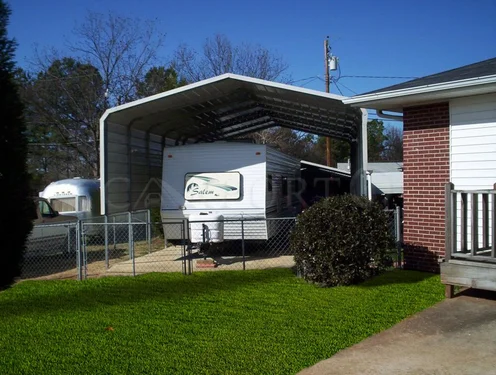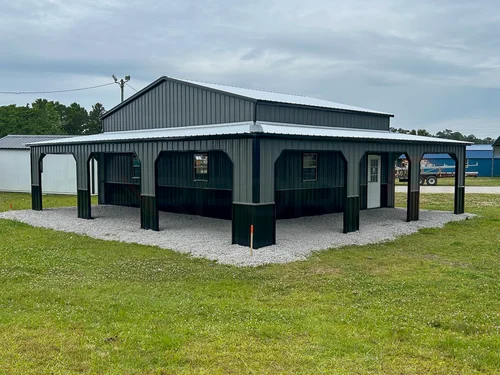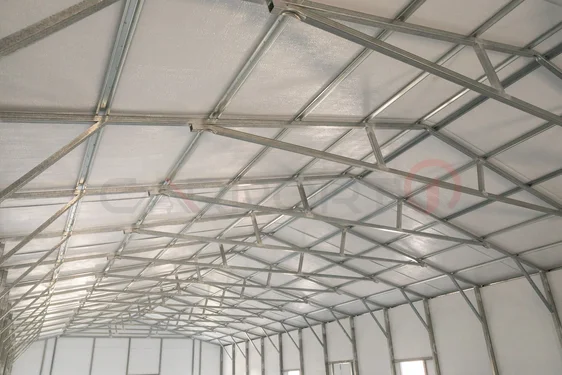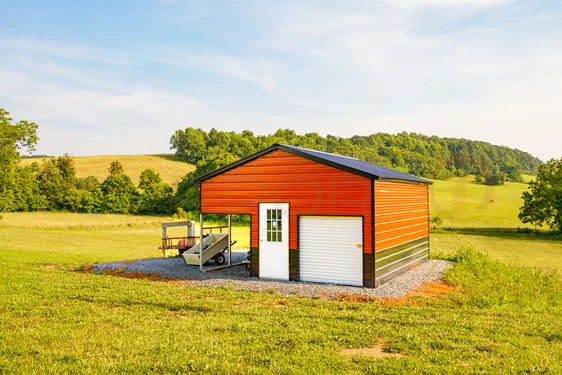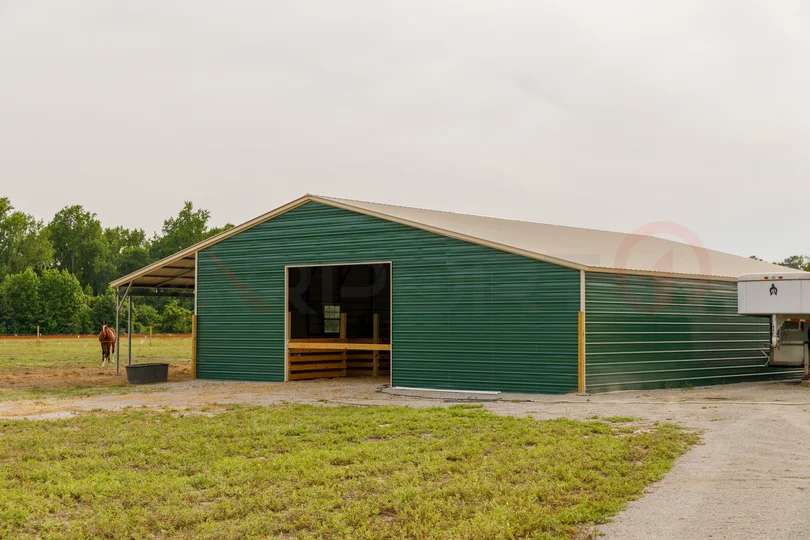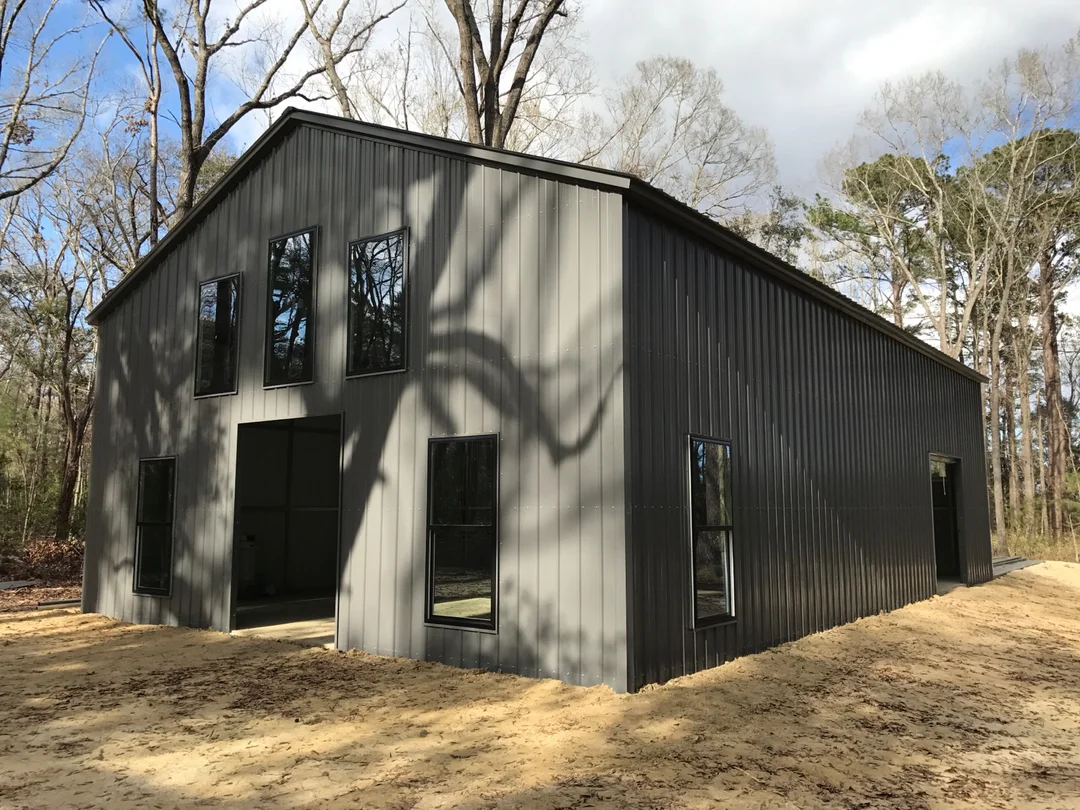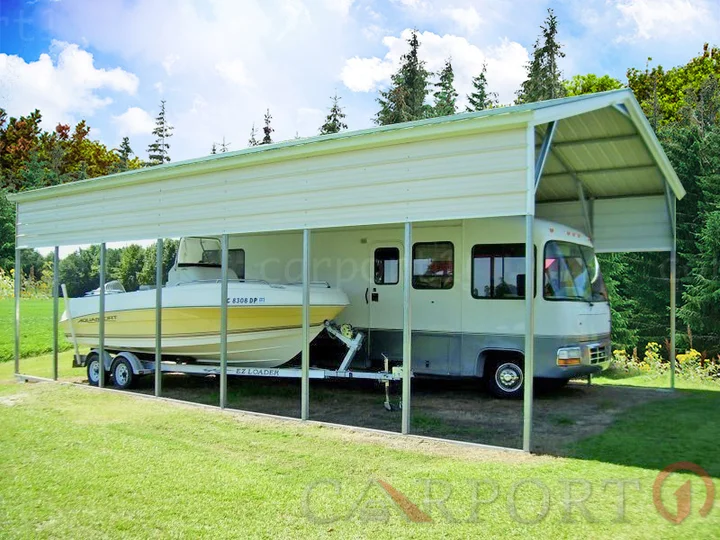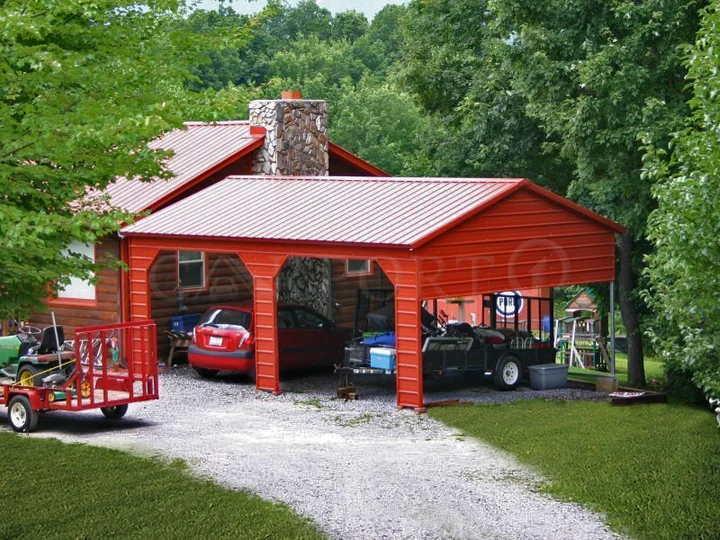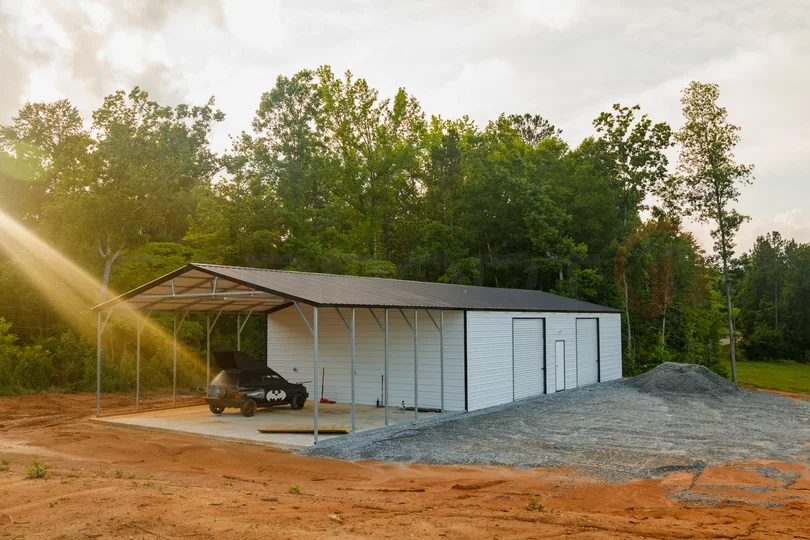When it comes to RVs, travel trailers, and motorhomes, it’s no secret that they are a major investment, much like a home. Many certainly exceed the cost of most automobiles and in order to protect your investment and to ensure many years of reliable service, RV owners need to maintain the interior and the exterior of the RV. The best way to protect both the interior and exterior of an RV is to keep it garaged or sheltered.
Over time, the roof of the RV or motorhome will begin to show signs of age first due to constant exposure to the elements. The sun’s UV rays and ozone in the air begin to age all of the exterior finish but the roof is usually the first to show signs of exposure. Paint will begin to fade and any rubber or vinyl on the unit’s exterior will begin to crack and break down. When possible, it’s always best to shelter or cover the RV or motorhome.
When it comes covering or sheltering your motorhome, there are several viable options. They include:
- Investing in a fully enclosed RV garage
- Investing in an RV Carport Shelter
- Renting RV Shelter Space at Storage Facilities
- Investing in Fabric or Breathable RV Covers
Renting RV shelter space can be expensive for long-term storage. If you don’t plan on keeping your RV long or you don’t have the space to store your RV on your own property, this option is probably ideal. Investing in fabric RV covers is better than not covering your RV at all but most RV owners say that they are a hassle to put on and off. Not only that, they tend to chaff the finish over time. Your RV unit’s exterior should be clean and the cover itself should be clean otherwise, the grit from both will chaff your RV’s finish over time.
If you have the space for RV storage, ideally the fully enclosed is the way to go. It fully protects the RV from the elements and keeps it clean while not in use. More often than not,RV carportsare the motorhome, fifth-wheel, and travel trailer owner’s choice for protection. They aren’t as expensive as the large enclosed garages and they provide excellent protection for any RV. Since the RV carport is purchased more often, we would like to share what we’ve learned over the years and what you might consider before buying one. The primary questions and considerations are:
- How will my RV carport be used?
- What size metal carport do I need for my RV?
- What roof system is best for my RV carport?
- What additional items or options do I need for my RV carport?
- How are the RV carports anchored?
RV carports have many uses. In many instances, they are used simply to store the RV or motorhome when it is not in use. More and more, recreational vehicle owners are placing their units at RV parks and at ‘vacation’ property they own, leaving them in place fully ready to use at any time. RV owners are utilizing metal carports to shelter the RV and also to provide additional shelter and shade at those semi-permanent locations. Once you determine how the RV carport or shelter will be used, this helps in determining the size.
When it comes to RV shelters and carports, size is the most important consideration. There are three dimensions to consider:
- Width
- Length
- Height
For many RV, travel trailer, and motorhome owners, 12’ wide seems to be the most desired with for RVs that are to store long-term if the RV does not have slide-outs. The 12’ wide unit takes up less space than a wider unit and certainly, it’s the least expensive. For long-term storage for those units that have slide-outs, RV owners usually choose the 18’ wide unit as those provide enough space to store the RV or motorhome long-term with the slide-outs extended.
For RV and travel trailers stored long-term, ready-to-use at RV parks and on ‘vacation’ property, many RV owners choose much wider RV carports. Not only wider units used to provide shelter for the RV, they also provide additional shelter for outdoor seating like a porch or patio cover and even shelter for grilling outside. Those units provide shelter from the elements, from tree sap, and keep the RV free from falling leaves during the autumn month. RV Covers also help keep the RV cooler in the summer months, requiring less air conditioning usage while occupied.
Length is another important consideration. You want to ensure that your RV carport provides the adequate shelter from the sun, rain, and tree sap on each end of the unit. A good rule of thumb for the length is to add a minimum of 5’ to the length of your RV for your metal RV shelter.
Regarding the dimensions, height is the most important! RV owners certainly want the height tall enough but you never want the shelter too tall! Many RV owners looking for long-term on-site storage will state that their RV carport is 13’ tall at the air conditioner so they request a 13’ side height. That will certainly work but it is our experience that is too tall, especially if the unit is totally open on the ends. If these carport shelters were a flat-top unit, 13’ might be ideal. Since the roof pitch is around 3/12, space is gained as you move to the center of the RV carport. For example, a regular style carport with a 13’ side height has an added 2’ 9” of height at the center. So, clearance from the brace at the peak of the unit to the ground is 15’ 9”. That’s almost 16’, a full 3’ taller than the air conditioner unit!
If a gable end were used in the unit, you might need that additional side height since the clearance for gables is 3” less than the leg height. A 13’ side height unit with gable ends would only have a clearance of 12’ 9”. Not only are the optional items like gables are a consideration, especially for those units that are parked at the ‘ready-to-use’ sites. Some RV owners may want the additional clearance on those units in case the air conditioning unit on the roof needs to be serviced or service for other items. Height really depends on how the RV carports will be used and on the height of the unit itself. If an RV carport owner ever complains about the selection of height, it’s usually because it’s too tall. You should consider what you need and get only what you need. The lower the clearance to the RV unit itself, the greater protection it will provide.
What roof system is best for you RV shelter? Always, the vertical roof system is the best roof system. You can read more about that on our roof systems page. Many long-term storage RV carport owners choose the regular style carport because it is the most economical. There are distinct advantages to each roof systems and the roof systems page is worth a visit to know the differences in each of those.
A number of options are offered for metal RV carports and the most common utilized are panels down each side of the unit to provide additional shelter and shade. The panels, which are 3’ wide, run the full length of the unit and also aid in strengthening the unit end-to-end. RV owners can choose to have multiple panels on each side, to have one panel on one side, or close one or both sides completely. Depending on how the RV carport will be used, many side panel configurations are available.
Options for the ends of the unit include gable ends, extended gable ends, and the end wall fully closed. Gable ends are also a popular choice for these metal RV shelters. The gable is the triangular-shaped component at the top of the unit on the end. The gable can also be extended to meet any panels that are placed on the side walls. Gables, extended gables, and end walls make RV carports stronger and more rigid, helping to reduce any side-to-side swaying in high winds.
When it comes to anchor systems, what is required depends on the area. In Florida, California, Michigan, Arizona, and New Mexico, certified anchor systems are required. In most other states, unless you are in a metro area, certified anchor systems are not required but are always recommended. For more information on the certified anchor systems, red our article on certified carports and non-certified carports.
The short of anchoring non-certified carports versus certified carports is the type of anchor used. On ground installations, a 30” rebar anchor is used to secure the unit to the ground. On certified installations, a double-helix mobile home anchor is augured into the ground and provides a more substantial anchor for tall RV carports. Even if you make the decision not to select the certified carports, you can get the optional mobile home anchors on the non-certified carports for an additional charge. They are inexpensive and provide excellent anchoring for ground/dirt/gravel installations. For concrete installations, concrete expansion sleeve anchors are used on both non-certified and certified installations.
RV owners have already made a substantial investment in their RV, travel trailer, or motorhome and it makes sense to keep the unit protected in some way to ensure years of service, to protect the finish, and also the keep the resale value higher. If you have the space on your property, many RV owners have said that the best and most cost effective long-term storage solution for their RV or motorhome is the metal RV carports. They avoid the hassle and chaffing of fabric or other types of RV covers and they aren’t throwing money away in rented space fees. The decision to keep an RV sheltered as an excellent choice. Ultimately, the method to that that you select is totally up to you.

